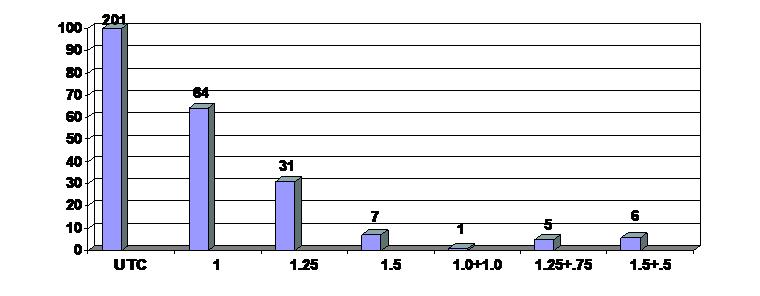 |
|
|
|

|
|||
| |
|||
The key to using the 3 preemergent herbicides that are registered in lettuce is to have the herbicide in the right place at the right time. In most cases this is within the top 0.5 inch of soil when the weed seeds germinate. Prefar and Balan stick strongly to the soil. Balan needs to be mechanically incorporated and Prefar needs plenty of water to push it into the soil. Kerb is distinctly different. It leaches with the normal amounts of water used in the low desert and must be managed accordingly. The delayed chemigation applications that are widely used are a means of accomplishing this. The timing rather than the application method is what is important. Split applications to prolong the exposure of the weed seeds to the herbicide have been tried in recent years and has recently been registered for this use. We have conducted trials with Dow Chemical to evaluate split applications of Kerb for the last few years. The following graph shows the results of one of these trials that was conducted in Bard. The treatments in this trial were 1) untreated, 2) 1.0 lb of Kerb 50W, 3) 1.25 lb, 4) 1.5 lb, 5) 1.0 lb at pegging and 1.0 lb five days later, 6) 1.25 lb followed by 0.75 lb and 7) 1.5 lb followed by 0.5 lb. In this particular trial, a single application of 1.5 lb. produced similar control to all of the split applications except for 1.0 lb. followed by 1.0 lb. which was the best treatment. Our overall impression was that a single application made at the correct time and rate is the best recommendation. Kerb Split Application Trial Goosefoot Control To contact Barry Tickes go to: btickes@ag.arizona.edu. |
|||
| Back | |||
For questions or comments on any of the topics please contact Marco Pena at the Yuma Agricultural Center. |
|||
| Home | Cotton
| Veggies | Forages
| Grains | Citrus
| Crop x Crop Insects | Diseases| Weeds | Pesticides | Economics | News | Weather | Research | Photos | Contacts | General Info. Copyright © 2001 University of Arizona, College of Agriculture and Life Sciences Webmaster: Al Fournier (acis@ag.arizona.edu) |
|||
